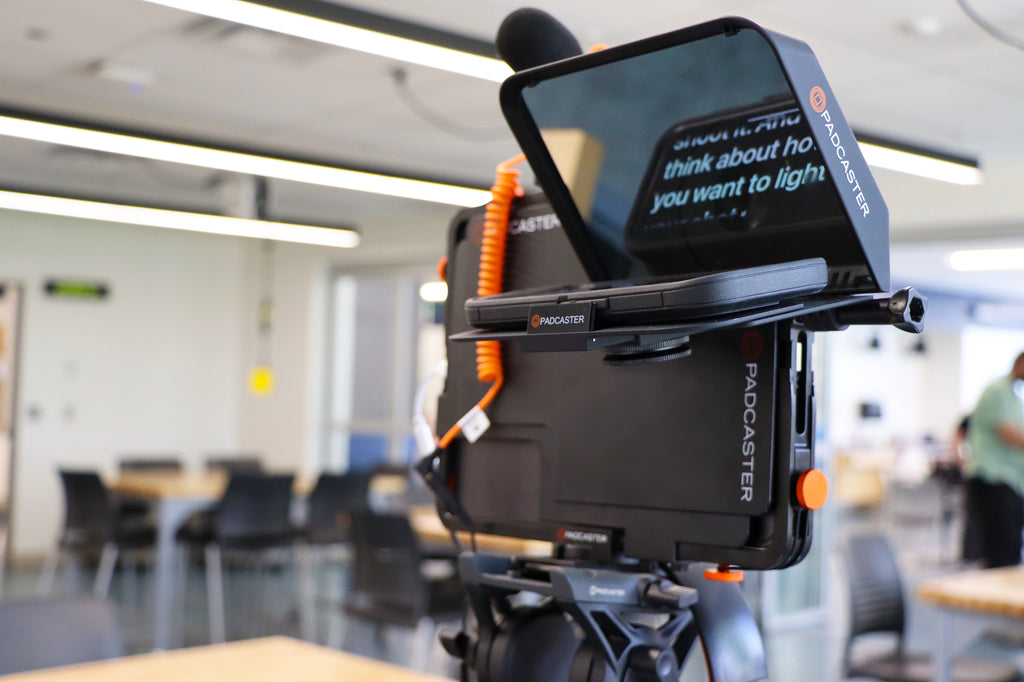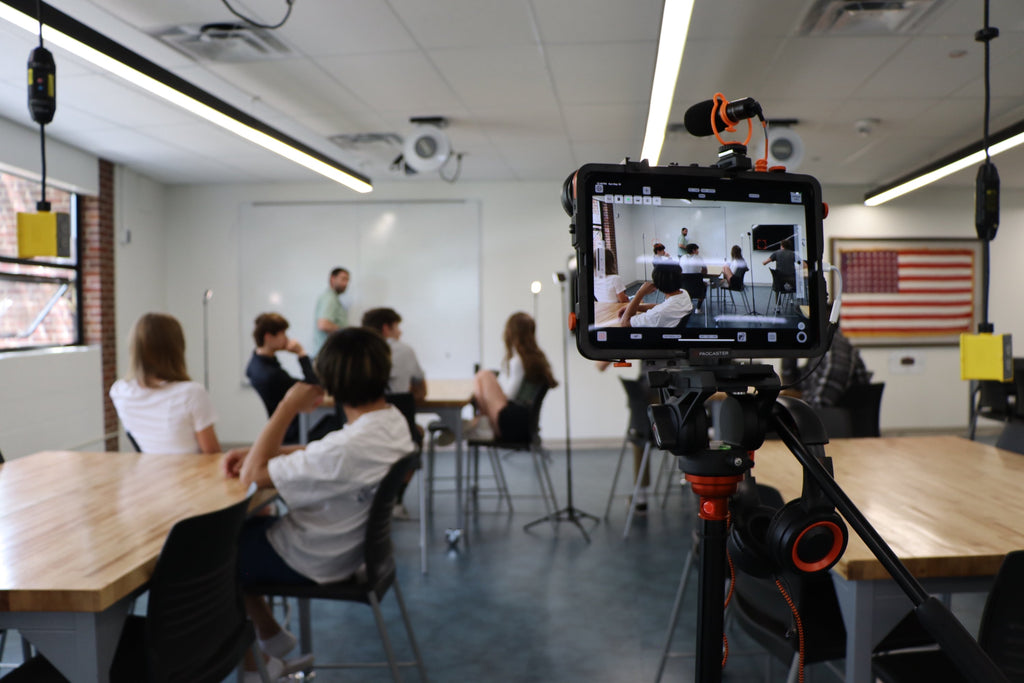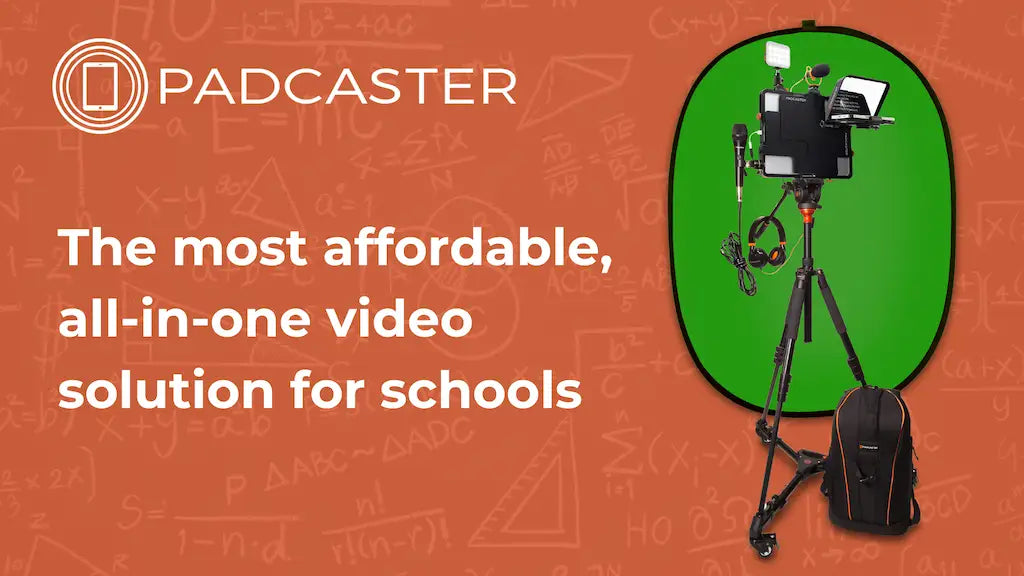
How long have you been teaching and how did you decide to go into teaching?
I have been teaching for close to 16 years. Honestly, it was not my plan. I have always been drawn to production management, and my mother told me to get my certificate. I did not ever want to be a teacher, but I figured why not get the certificate! To tell you the truth, I don’t think that there is much in me that “naturally” tells me to be a teacher, but that might be one of my greatest strengths. I don’t think I am a kid person, teaching is not in my blood, and bureaucracy drives me insane. That said, I think these facts make me look at the system in a different way. While every fish is swimming one way, I am absolutely swimming the other. I believe that this is the space where programs like mine are born. While some see what is expected, I see what is missing and my instinct is to do something about it.
What initially inspired you to start incorporating video into your curriculum?
Like I said, I have an ability to see what is missing, and I always act to fill in, for lack of a better phrase, the blanks. New Rochelle is one of the largest and most diverse districts in the Westchester area. I was always flabbergasted that we did not have a mainstream program in our school that addressed film and theatre. The fact is, especially in the New York area, this is a huge source of jobs.
I had already been teaching a course that I created, called “Film as Narrative,” that taught students how to take short stories and pitch them as movies.
So, it was a natural fit when the administration came to me to fill a theatre position in the PAVE program, a “Fame” like school program that exists within our school, and I jumped at the chance. And, in addition to that class, the administration asked me to teach a scriptwriting class. Although the class had already been in existence, the administration had hoped for a change. I then had the idea to not just explore theatre acting but film acting as well.
Obviously, a film program was expensive, and although the Principal was very supportive, there were voices within the district that were not. Again, it became my job to find what was missing from the whole scenario, and what we were missing is that kids already were carrying around the very objects we needed, cameras. This became the inspiration for what we are now, and there has been no looking back.
How are you incorporating video production into your curriculum?
There are so many ways that video production fits into our curriculum.
First, my acting students all write and film original movies. Each film is based on a poem, and the students not only hone and explore the world of films through these projects, they also explore English Language Arts.
In addition, the students have both a club that produces films and an interview series. The interview series is called “Be The Teacher” and it has become very popular. Even the Chancellor of Education for New York State, Dr. Betty Rosa (video below), as well as Carl Heastie, Speaker of the New York State Assembly, came to our school to find out more about our program and series.
Finally, I now have a new class that is more of an introductory class. The students in this class learn about editing, narrative films, documentaries, and other film arts.
What made you decide to use phones and iPads to make videos? What are the benefits?
This was the easiest way to provide a camera for every student. These devices provide a school with an opportunity to create a film program that can range from basic to complex.
That said, what I like most is how the device democratizes the experience. The fact is, a traditional camera can be intimidating, especially for kids, and not every child or school has access to a camera. A Smartphone and Smart tablet, however, allows access for all. Furthermore, these devices have been become synonymous with “bad” teenage choices. From SnapChat to WorldStar, students are making negative choices when it comes to these devices. This class teaches kids to create works of substance with their mobile devices. I am always so excited when a student runs in, especially after the class has ended, and the student has a film to share or a video story to tell. The fact that the learning and working continues after the bells have rung and the grades have been given is the greatest “benefit” from choosing the “non-traditional” mobile device instead of the “traditional” camera.
What do you think your students enjoy most about the process?
What is most interesting for me is that the students do not know that they are studying English, both reading and writing. I know this does not answer your question directly, but it does tie in. The kids feel like they are in “summer camp,” so they learn without knowing they are learning, which they probably appreciate the most. In fact, the number of messages, emails, and testimonials that students create after the fact, each recounting the profound impact that this new study has had on their education and careers, is humbling. The students become better readers, writers, critical thinkers, critical readers (which is different)… But the students also become better project managers, artists, storytellers, citizens, etc…
So, I think in the moment the students would say they have fun, but after the fact I think they would appreciate that they experienced personal growth by having a true educational opportunity to think outside the box.
How did you discover Padcaster and what made you decide to use it?
I found Padcaster on the Kickstarter website. This happened at the exact moment when I was pitching the class.
What is always funny to me is that when I pitched the class I did not know if an “iPad film class” was even possible. So, that Kickstater moment will always be that moment when the clouds parted and the sun shone down.
I immediately reached out to Padcaster. Padcaster had become our most significant ally in this process, and no one has been more supportive. The fact is, their support has created a loyal admirer, and even when they have encouraged us to experiment and try other devices, the dedication they have given to this art form and their attention to detail has made them the greatest resource for any teacher or school who is hoping to incorporate this level of innovation in their classroom.
How does Padcaster impact the filmmaking process and the final product?
It is simply a quality product. As the kids say… “Dead Ass.” Can I say that? (laughs)
I have so many different products that we have explored in our class. There is no question that the Padcaster is just the best product. The versatility and quality of the project allow a teacher or filmmaker to think outside the box.
I have used it as a steady cam rig, to attach sound equipment, with my go pro, with my camera, with multiple cameras, etc. It is a versatile product, and as the technology has changed the product has remained useable and relevant.
Your program has been so successful. What are some of your goals moving forward?
I have said so much, but I have a simple answer for this question. I hope other teachers and administrators see this article and learn about our program and I hope those teachers and administrators take a risk on a similar program. ■
Need More Information?
Fill out the form here to get in touch with a member of the Padcaster Team.


